History

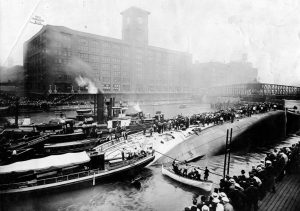 Shipwrecks on the Great Lakes are not a totally uncommon event. Over the last 300 years, Lake Michigan has claimed countless ships, mostly in violent storms and bad weather, especially when the gales of November come in. Nevertheless, a few ships went down without even reaching open waters. One of those ships was the SS Eastland, which went down while docked between LaSalle and Clark Streets on the Chicago River. That site and that ship became the site of the greatest loss of life on the Great Lakes, and it wasn’t a fire, explosion, or act of war, but rather something far more strange.
Shipwrecks on the Great Lakes are not a totally uncommon event. Over the last 300 years, Lake Michigan has claimed countless ships, mostly in violent storms and bad weather, especially when the gales of November come in. Nevertheless, a few ships went down without even reaching open waters. One of those ships was the SS Eastland, which went down while docked between LaSalle and Clark Streets on the Chicago River. That site and that ship became the site of the greatest loss of life on the Great Lakes, and it wasn’t a fire, explosion, or act of war, but rather something far more strange.
The SS Eastland was built by the Michigan Steamship Company in 1902 and began regular passenger service later that year. In July 1903, the ship held an open house so the public could have a look. The sudden number of people, particularly on the upper decks, caused the Eastland to list so severely that water came in through the gangways where passengers and freight would be brought aboard. The ship was obviously top-heavy and this problem had to dealt with quickly, but these incidences continued to plague the ship. In 1905, the Eastland was sold to the Michigan Transportation Company. During the summer of 1906, the Eastland listed again as it transported 2500 passengers, and her carrying capacity was reduced to 2400. But in July 1912, the Eastland was reported as having once more listed to port and then to starboard while carrying passengers. In 1915, the LaFollette Seaman’s Act, which was created as a response to the Titanic not carrying sufficient lifeboats, was passed. The Seaman’s Act mandated that lifeboat space would no longer depend on gross tonnage, but rather on how many passengers were on board. However adding extra weight to the ship put top-heavy vessels like the Eastland at greater risk of listing. In fact, the Senate Commerce Committee was cautioned at the time that placing additional lifeboats and life rafts on the top decks of Great Lakes ships would make them dangerously unstable. This was a warning that the Senate Committee and the Eastland should have heeded.
On July 24, 1915, the Eastland once again fell victim to its top heavy design, and this time the outcome was disastrous. On that cool Saturday morning in Chicago, the Eastland and two other steamers were waiting to take on passengers bound for an annual company picnic in Michigan City, Indiana. For many of the employees of Western Electric Company’s Hawthorne Works, this would be the only holiday they would enjoy all year. A large number of these employees from the 200-acre plant in Cicero, Illinois were Czech Bohemian immigrants. Excitement was in the air as thousands of employees thronged along the river. Three ships would transport them across Lake Michigan to the picnic grounds in Indiana. The Eastland was slated to be the first ship boarded. That morning the Eastland was docked between LaSalle and Clark Streets on the Chicago River. As soon as passengers began boarding, Captain Harry Pedersen and his crew noticed that the ship was listing to port even though most passengers were gathered along the starboard. Attempts were made to right the vessel, but stability seemed uncertain. At 7:10am, the ship reached its maximum carrying capacity of 2572 passengers and the gangplank was pulled in.
As the captain made preparations to depart at 7:21am, the crew continued to let water into the ship’s ballast tanks in an attempt to stabilize the vessel. At 7:23am, water began to pour in through the port gangways. Within minutes, the ship was seriously listing but most passengers seemed unaware of the danger. I wondered how this could have continued to happen, until I saw this video, that explained it very well. By 7:27am, the ship listed so badly that passengers found it too difficult to dance so the orchestra musicians started to play ragtime instead to keep everyone entertained. Just one minute later, at 7:28am, panic set in. Dishes crashed off shelves, a sliding piano almost crushed two passengers, and the band stopped playing as water poured through portholes and gangways. In the next two minutes, the ship completely rolled over on its side, and settled on the shallow river bottom 20 feet below. Passengers below deck now found themselves trapped as water gushed in and heavy furniture careened wildly. Men, women and children threw themselves into the river, but others were trapped between decks, or were crushed by the ship’s furniture and equipment. The lifeboats and life jackets were of no use since the ship had capsized too quickly to access them. In the end, 844 people lost their lives, including 22 entire families. It was a tragedy of epic proportions.
Bystanders on the pier rushed to help those who had been thrown into the river, while a tugboat rescued passengers clinging to the overturned hull of the ship. An eyewitness to the disaster wrote: “I shall never be able to forget what I saw. People were struggling in the water, clustered so thickly that they literally covered 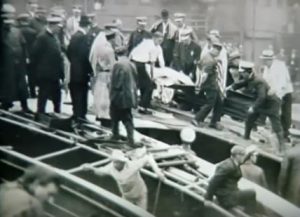
 the surface of the river. A few were swimming; the rest were floundering about, some clinging to a life raft that had floated free, others clutching at anything that they could reach…at bits of wood, at each other, grabbing each other, pulling each other down, and screaming! The screaming was the most horrible of them all.” Yes, I’m sure that was the worst, and the loss of life was something that would never be forgotten…especially for an eye witness.
the surface of the river. A few were swimming; the rest were floundering about, some clinging to a life raft that had floated free, others clutching at anything that they could reach…at bits of wood, at each other, grabbing each other, pulling each other down, and screaming! The screaming was the most horrible of them all.” Yes, I’m sure that was the worst, and the loss of life was something that would never be forgotten…especially for an eye witness.
 After the Soviet Union launched Sputnik, the world’s first satellite, on October 4, 1957, inspiring the United States to keep up, or fall behind in the Cold War, the United States launched it’s first satellite on January 31, 1958. That satellite was called Explorer 1, and followed the first two Soviet satellites the previous year…Sputnik 1 and 2. It was the beginning the Cold War Space Race between the two nations. Explorer 1 had mercury batteries that powered the high-power transmitter for 31 days and the low-power transmitter for 105 days. Explorer 1 stopped transmission of data on May 23, 1958 when its batteries died, but remained in orbit for more than 12 years. It reentered the atmosphere over the Pacific Ocean on March 31, 1970 after more than 58,000 orbits. The Explorer 1 payload consisted of the Iowa Cosmic Ray Instrument. It was without a tape data recorder, which was not modified in time to make it onto the spacecraft. The real-time data received on the ground was therefore very sparse and puzzling showing normal counting rates and no counts at all. I’m not sure what the counting was all about, so I guess I’m more confused than the scientists were. The later Explorer 3 mission, which included a tape data recorder in the payload, provided the additional data for confirmation of the earlier Explorer 1 data.
After the Soviet Union launched Sputnik, the world’s first satellite, on October 4, 1957, inspiring the United States to keep up, or fall behind in the Cold War, the United States launched it’s first satellite on January 31, 1958. That satellite was called Explorer 1, and followed the first two Soviet satellites the previous year…Sputnik 1 and 2. It was the beginning the Cold War Space Race between the two nations. Explorer 1 had mercury batteries that powered the high-power transmitter for 31 days and the low-power transmitter for 105 days. Explorer 1 stopped transmission of data on May 23, 1958 when its batteries died, but remained in orbit for more than 12 years. It reentered the atmosphere over the Pacific Ocean on March 31, 1970 after more than 58,000 orbits. The Explorer 1 payload consisted of the Iowa Cosmic Ray Instrument. It was without a tape data recorder, which was not modified in time to make it onto the spacecraft. The real-time data received on the ground was therefore very sparse and puzzling showing normal counting rates and no counts at all. I’m not sure what the counting was all about, so I guess I’m more confused than the scientists were. The later Explorer 3 mission, which included a tape data recorder in the payload, provided the additional data for confirmation of the earlier Explorer 1 data.
Landsat 1, which was originally named “Earth Resources Technology Satellite 1”, was the first satellite in the United States’ Landsat program. It was the first satellite that was launched with the sole purpose of studying and monitoring the planet. Landsat 1 was a modified version of the Nimbus 4 meteorological satellite and was launched on July 23, 1972 by a Delta 900 rocket from Vandenberg Air Force Base in California. Its orbit was near-polar and it served as a stabilized, Earth-oriented platform for obtaining information on agricultural and forestry resources, geology and mineral resources, hydrology and water resources, geography, cartography, environmental pollution, oceanography and marine resources, and meteorological phenomena. The spacecraft was placed in a sun-synchronous orbit, with an altitude between 564 and 569 miles. The spacecraft was placed in an orbit with an inclination of 99 degrees which orbited the Earth every 103 minutes. The project was renamed to Landsat in 1975.
Landsat 1 had two sensors to achieve its primary objectives…the return beam Vidicon (RBV) and the multispectral scanner (MSS). The RBV was manufactured by the Radio Corporation of America (RCA). The RBV obtained visible light and near infrared photographic images of Earth. It was considered the primary sensor. The MSS sensor manufactured by Hughes Aircraft Company was considered an experimental and secondary sensor, until scientists reviewed the data that was beamed back to Earth. After the data was reviewed, the MSS 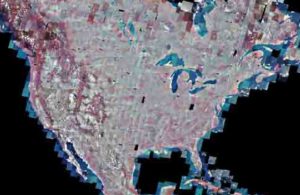 was considered the primary sensor. The MSS was a four-channel scanner that obtained radiometric images of Earth. From launch until 1974, Landsat 1 transmitted over 100,000 images, which covered more than 75% of the Earth’s surface. The RBV only took 1690 images. In 1976, Landsat 1 discovered a tiny uninhabited island 12 miles off the eastern coast of Canada. This island was named Landsat Island after the satellite. The MSS provided more than 300,000 images over the lifespan of the satellite. NASA oversaw 300 researchers that evaluated the data that Landsat 1 transmitted back to Earth. The Landsat 1 satellite sent data back to earth from its orbit until January of 1978 when its tape recorders malfunctioned. After that, it was taken out of service.
was considered the primary sensor. The MSS was a four-channel scanner that obtained radiometric images of Earth. From launch until 1974, Landsat 1 transmitted over 100,000 images, which covered more than 75% of the Earth’s surface. The RBV only took 1690 images. In 1976, Landsat 1 discovered a tiny uninhabited island 12 miles off the eastern coast of Canada. This island was named Landsat Island after the satellite. The MSS provided more than 300,000 images over the lifespan of the satellite. NASA oversaw 300 researchers that evaluated the data that Landsat 1 transmitted back to Earth. The Landsat 1 satellite sent data back to earth from its orbit until January of 1978 when its tape recorders malfunctioned. After that, it was taken out of service.
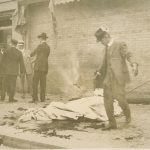 Most people would agree that the prospect of taking a nation into war is a scary one at best…especially for its citizens. In 1916, the world was in the middle of World War I. Isolationism had been the order of the day, as the United States tried to stay out of this war, but by the summer of 1916, with the Great War raging in Europe, and with the United States and other neutral ships threatened by German submarine aggression, it had become clear to many in the United States that their country could no longer stand on the sidelines. With that in mind, some of the leading business figures in San Francisco planned a parade in honor of American military preparedness. The day was dubbed Preparedness Day, and with the isolationist, anti-war, and anti-preparedness feeling that still ran high among a significant population of the city…and the country, not only among such radical organizations as International Workers of the World (the so-called “Wobblies”) but among mainstream labor leaders. These opponents of the Preparedness Day event undoubtedly shared the view voiced publicly by one critic, former U.S. Secretary of State William Jennings Bryan, who claimed that the organizers, San Francisco’s financiers and factory owners, were acting in pure self-interest, as they clearly stood to benefit from an increased production of munitions. At the same time, with the rise of Bolshevism and labor unrest, San Francisco’s business community was justifiably nervous. The Chamber of Commerce organized a Law and Order Committee, despite the diminishing influence and political clout of local labor organizations. Radical labor was a small but vociferous minority which few took seriously. Nevertheless, it became obvious that violence was imminent.
Most people would agree that the prospect of taking a nation into war is a scary one at best…especially for its citizens. In 1916, the world was in the middle of World War I. Isolationism had been the order of the day, as the United States tried to stay out of this war, but by the summer of 1916, with the Great War raging in Europe, and with the United States and other neutral ships threatened by German submarine aggression, it had become clear to many in the United States that their country could no longer stand on the sidelines. With that in mind, some of the leading business figures in San Francisco planned a parade in honor of American military preparedness. The day was dubbed Preparedness Day, and with the isolationist, anti-war, and anti-preparedness feeling that still ran high among a significant population of the city…and the country, not only among such radical organizations as International Workers of the World (the so-called “Wobblies”) but among mainstream labor leaders. These opponents of the Preparedness Day event undoubtedly shared the view voiced publicly by one critic, former U.S. Secretary of State William Jennings Bryan, who claimed that the organizers, San Francisco’s financiers and factory owners, were acting in pure self-interest, as they clearly stood to benefit from an increased production of munitions. At the same time, with the rise of Bolshevism and labor unrest, San Francisco’s business community was justifiably nervous. The Chamber of Commerce organized a Law and Order Committee, despite the diminishing influence and political clout of local labor organizations. Radical labor was a small but vociferous minority which few took seriously. Nevertheless, it became obvious that violence was imminent.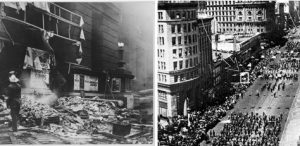
A radical pamphlet of mid-July read in part, “We are going to use a little direct action on the 22nd to show that militarism can’t be forced on us and our children without a violent protest.” It was in this environment that the Preparedness Parade found itself on July 22, 1916. In spite of that, the 3½ hour long procession of some 51,329 marchers, including 52 bands and 2,134 organizations, comprising military, civic, judicial, state and municipal divisions as well as newspaper, telephone, telegraph and streetcar unions, went ahead as planned. At 2:06pm, about a half hour after the parade began, a bomb concealed in a suitcase exploded on the west side of Steuart Street, just south of Market Street, near the Ferry Building. Ten bystanders were killed by the explosion, and 40 more were wounded, in what became the worst terrorist act in San Francisco history. The city and the nation were outraged, and they declared that justice would be served.
Two radical labor leaders, Thomas Mooney and Warren K Billings, were quickly arrested and tried for the  attack. In the trial that followed, the two men were convicted, despite widespread belief that they had been framed by the prosecution. Mooney was sentenced to death and Billings to life in prison. After evidence surfaced as to the corrupt nature of the prosecution, President Woodrow Wilson called on California Governor William Stephens to look further into the case. Two weeks before Mooney’s scheduled execution, Stephens commuted his sentence to life imprisonment, the same punishment Billings had received. Investigation into the case continued over the next two decades. By 1939, evidence of perjury and false testimony at the trial had so mounted that Governor Culbert Olson pardoned both men, and the true identity of the Preparedness Day bomber, or bombers, remains forever unknown.
attack. In the trial that followed, the two men were convicted, despite widespread belief that they had been framed by the prosecution. Mooney was sentenced to death and Billings to life in prison. After evidence surfaced as to the corrupt nature of the prosecution, President Woodrow Wilson called on California Governor William Stephens to look further into the case. Two weeks before Mooney’s scheduled execution, Stephens commuted his sentence to life imprisonment, the same punishment Billings had received. Investigation into the case continued over the next two decades. By 1939, evidence of perjury and false testimony at the trial had so mounted that Governor Culbert Olson pardoned both men, and the true identity of the Preparedness Day bomber, or bombers, remains forever unknown.
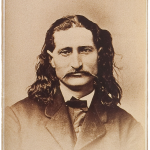 When we think of the Old West, cowboys, Indians, and outlaws come to mind…not to mention showdowns, or what might have been known as a duel, in years gone by. In reality, showdowns were not all that common…no matter what Hollywood tries to tell you. The men and women who went west were a tough bunch. In the beginning, it was mostly men who went west, and since there was no law in the West, altercations were bound to happen. Still, altercations that led to a showdown were not all that common. Rather than coolly confronting each other on a dusty street in a deadly game of quick draw, most men began shooting at each other in drunken brawls or spontaneous arguments. Ambushes and cowardly attacks were far more common than noble showdowns, but those who took the noble approach were far more respected.
When we think of the Old West, cowboys, Indians, and outlaws come to mind…not to mention showdowns, or what might have been known as a duel, in years gone by. In reality, showdowns were not all that common…no matter what Hollywood tries to tell you. The men and women who went west were a tough bunch. In the beginning, it was mostly men who went west, and since there was no law in the West, altercations were bound to happen. Still, altercations that led to a showdown were not all that common. Rather than coolly confronting each other on a dusty street in a deadly game of quick draw, most men began shooting at each other in drunken brawls or spontaneous arguments. Ambushes and cowardly attacks were far more common than noble showdowns, but those who took the noble approach were far more respected.
Southern emigrants brought to the West a crude form of the “code duello,” a highly formalized means of solving disputes between gentlemen with swords or guns that had its origins in European chivalry. Similar to the duels of times past, they thought it would bring some form of civility to the West. The duel influenced the informal western code of what constituted a legitimate and legal gun battle. Duels were not used to for very long. In fact, by the second half of the 19th century, few Americans still fought duels to solve their problems. 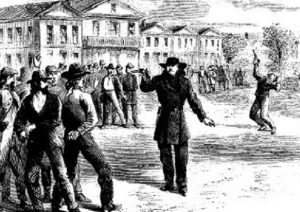 The western code required that a man resort to his six-gun only in defense of his honor or life, and only if his opponent was also armed. Also, a western jury was unlikely to convict a man in a shooting provided witnesses testified that his opponent had been the aggressor.
The western code required that a man resort to his six-gun only in defense of his honor or life, and only if his opponent was also armed. Also, a western jury was unlikely to convict a man in a shooting provided witnesses testified that his opponent had been the aggressor.
In what is thought to be the first western duel, Wild Bill Hickok, killed Davis Tutt on July 21, 1865. Hickok was a skilled gunman with a formidable reputation, who was eking out a living as a professional gambler in Springfield, Missouri. He quarreled with Tutt, a former Union soldier, but it is unclear what caused the dispute. Some people say it was over a card game while others say they fought over a woman. Whatever the cause, the two men agreed to a duel. The showdown took place the following day with crowd of onlookers watching as Hickok and Tutt confronted each other from opposite sides of the town square. When Tutt was about 75 yards away, Hickok shouted, “Don’t come any closer, Dave.” Tutt nervously drew his revolver and fired a shot that went wild. Hickok, by contrast, remained cool. He steadied his own revolver in his left hand and shot Tutt dead with a bullet through the chest. Hickok immediately turn and threatened Tutt’s friends…should they try to avenge his death.

Having adhered to the code of the West, Hickok was acquitted of manslaughter charges. Nevertheless, those were rough times, and just eleven years later, Hickok died in a fashion far more typical of the violence of the day. A young gunslinger shot him in the back of the head while he played cards. Legend says that the hand Hickok was holding at the time of his death was two pair…black aces and black eights. The hand would forever be known as the “dead man’s hand.” Jack McCall shot Hickok from behind as he played poker at Nuttal & Mann’s Saloon in Deadwood, Dakota Territory on August 2, 1876. In one shooting is honor, and in another is a dishonor. McCall was executed for the murder on March 1, 1877.
 Most people know that at 10:56pm EDT, on July 20, 1969, American astronaut Neil Armstrong, 240,000 miles from Earth, speaks these words to more than a billion people listening at home, “That’s one small step for man, one giant leap for mankind.” Stepping off the lunar landing module Eagle, Armstrong became the first human to walk on the surface of the moon. The moment was historic, in more ways than one. Yes, the United States was the first nation to put a man on the moon. John F Kennedy’s dream had become a reality. On May 25, 1961, Kennedy made his famous appeal to a special joint session of Congress: “I believe this nation should commit itself to achieving the goal, before this decade is out, of landing a man on the moon and returning him safely to Earth.”
Most people know that at 10:56pm EDT, on July 20, 1969, American astronaut Neil Armstrong, 240,000 miles from Earth, speaks these words to more than a billion people listening at home, “That’s one small step for man, one giant leap for mankind.” Stepping off the lunar landing module Eagle, Armstrong became the first human to walk on the surface of the moon. The moment was historic, in more ways than one. Yes, the United States was the first nation to put a man on the moon. John F Kennedy’s dream had become a reality. On May 25, 1961, Kennedy made his famous appeal to a special joint session of Congress: “I believe this nation should commit itself to achieving the goal, before this decade is out, of landing a man on the moon and returning him safely to Earth.”
Most people know the rest of the story, or do they. At that moment, and for the next few moments, Neil Armstrong was the only human to step foot on the moon. He would always be the first human to step foot on the moon, but for a few minutes, he was the only human to do so. “Buzz” Aldrin joined him on the moon’s surface at 11:11pm, so now there were two humans who had walked on the moon, and while that was quite different from Armstrong’s feeling of being the only human to walk on the moon, it was still something so unique that I’m sure it had to be almost mind-boggling. Lots of us have done something that no one else in our  family or social circle has done, and the feeling of accomplishment is almost like a high, but this was something that no other human had ever done. Now that’s a high!! Of course, Armstrong wasn’t the only human to ever experience something like that. Many pioneers in different areas of history did the same thing. The first flight, the first car, the first heart transplant…the list goes on, but all of those had one thing in common. They were done on Earth. Armstrong was the first person to walk on a planet that was not the Earth. No matter how you look at it, this was unique, and Armstrong stood alone among human beings…not only for his accomplishment, but more for where it took place.
family or social circle has done, and the feeling of accomplishment is almost like a high, but this was something that no other human had ever done. Now that’s a high!! Of course, Armstrong wasn’t the only human to ever experience something like that. Many pioneers in different areas of history did the same thing. The first flight, the first car, the first heart transplant…the list goes on, but all of those had one thing in common. They were done on Earth. Armstrong was the first person to walk on a planet that was not the Earth. No matter how you look at it, this was unique, and Armstrong stood alone among human beings…not only for his accomplishment, but more for where it took place.
After “Buzz” Aldrin joined Neil Armstrong on the moon’s surface, they took photographs of the terrain, planted a United States flag on its surface. Then they ran a few simple scientific tests, and spoke with President Richard M Nixon via Houston. By 1:11am on July 21, both astronauts were back in the lunar module and the hatch was closed. The two men slept that night on the surface of the moon. Then, at 1:54pm the Eagle began its ascent back to the command module. Among the items left on the surface of the moon was a plaque that read: “Here men from the planet Earth first set foot on the moon–July 1969 A.D–We came in peace for all mankind.” There would be five more successful lunar landing missions, and one unplanned lunar swing-by, when Apollo 13 experienced a malfunction that nearly made it impossible to return to Earth. The last men to walk on the moon, astronauts Eugene Cernan and Harrison Schmitt of the Apollo 17 mission, left the lunar surface on December  14, 1972. In all, 12 men walked on the moon. All Americans, they were, on Apollo 11: Neil Armstrong (NASA Civilian) and Buzz Aldrin (USAF), on Apollo 12: Pete Conrad (US Navy) and Alan Bean (US Navy), on Apollo 14: Alan Shepard (US Navy) and Edgar Mitchell (US Navy), on Apollo 15: David Scott (USAF) and James Irwin (USAF), on Apollo 16: John Young (US Navy) and Charles Duke (USAF), and on Apollo 17: Gene Cernan (US Navy) and Harrison Schmitt (NASA Civilian). While Neil Armstrong was the only human to walk on the moon’s surface for 15 minutes in time, there were 11 others who had the distinct honor of walking on the moon, and while they weren’t the only humans, they were the only 12 humans to do so, and that had to feel really strange to them for the rest of their lives.
14, 1972. In all, 12 men walked on the moon. All Americans, they were, on Apollo 11: Neil Armstrong (NASA Civilian) and Buzz Aldrin (USAF), on Apollo 12: Pete Conrad (US Navy) and Alan Bean (US Navy), on Apollo 14: Alan Shepard (US Navy) and Edgar Mitchell (US Navy), on Apollo 15: David Scott (USAF) and James Irwin (USAF), on Apollo 16: John Young (US Navy) and Charles Duke (USAF), and on Apollo 17: Gene Cernan (US Navy) and Harrison Schmitt (NASA Civilian). While Neil Armstrong was the only human to walk on the moon’s surface for 15 minutes in time, there were 11 others who had the distinct honor of walking on the moon, and while they weren’t the only humans, they were the only 12 humans to do so, and that had to feel really strange to them for the rest of their lives.
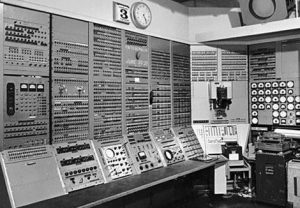 These days, being connected to the internet is commonplace. We connect from our computer, laptop, tablet, and even our phone. Many occupations, including the one I am in could not really function without the internet. When the computers go down, we are shut down too. For most of us, the internet is so much a part of our lives, that we simply cannot imagine life without it. Nevertheless, the reality is that until quite recently, there was no internet. I know people who think that might have been a better time, but I disagree. In fact, I think the people who say they think that, really have no idea just how bad that would be, and if they tried it once, they would change their minds quickly. People don’t realize how many things depend on the internet.
These days, being connected to the internet is commonplace. We connect from our computer, laptop, tablet, and even our phone. Many occupations, including the one I am in could not really function without the internet. When the computers go down, we are shut down too. For most of us, the internet is so much a part of our lives, that we simply cannot imagine life without it. Nevertheless, the reality is that until quite recently, there was no internet. I know people who think that might have been a better time, but I disagree. In fact, I think the people who say they think that, really have no idea just how bad that would be, and if they tried it once, they would change their minds quickly. People don’t realize how many things depend on the internet.
The first real idea of information available at our fingertips began to form on October 4, 1957, when the Soviet Union launched the world’s first manmade satellite into orbit. Known as Sputnik, the satellite did not do much. It tumbled aimlessly around in outer space, sending blips and bleeps from its radio transmitters as it circled the Earth. Nevertheless, to many Americans, the one foot diameter Sputnik was proof of something alarming. Up to this point, scientists and engineers in the United States had been designing bigger cars and better television sets, but the Soviets had been focusing on…less frivolous things, and they were going to win the Cold War because of it. Americans saw that information could eventually be transmitted back to the Soviets concerning American military and government secrets. It was the dawning of the age of spy satellites.
Sputnik’s launch, brought about the era of science and technology in America. In an effort to keep up, schools began teaching subjects like chemistry, physics and calculus. The government gave grants to corporations, who invested them in scientific research and development. The federal government formed new agencies, such as the National Aeronautics and Space Administration (NASA) and the Department of Defense’s Advanced Research Projects Agency (ARPA), to develop space-age technologies such as rockets, weapons and computers. Of course, the computer didn’t do nearly as much as it does these days, and it was the size of a small house. In 1962, a scientist from M.I.T. and ARPA named J.C.R. Licklider proposed a solution to this problem. His proposal  was a “galactic network” of computers that could talk to one another. Such a network would enable government leaders to communicate even if the Soviets destroyed the telephone system. Then came “packet switching.” Packet switching breaks data down into blocks, or packets, before sending it to its destination. That way, each packet can take its own route from place to place. Without packet switching, the government’s computer network, which is now known as the ARPAnet, would have been just as vulnerable to enemy attacks as the phone system. At least now computers did more, but they were still big.
was a “galactic network” of computers that could talk to one another. Such a network would enable government leaders to communicate even if the Soviets destroyed the telephone system. Then came “packet switching.” Packet switching breaks data down into blocks, or packets, before sending it to its destination. That way, each packet can take its own route from place to place. Without packet switching, the government’s computer network, which is now known as the ARPAnet, would have been just as vulnerable to enemy attacks as the phone system. At least now computers did more, but they were still big.
In 1969, ARPAnet delivered its first message. A “node-to-node” communication from one computer located in a research lab at UCLA, to the second located at Stanford. The message “LOGIN” was short and simple, and it crashed the ARPA network. Wow!! Things really are different today. The Stanford computer only received the note’s first two letters. By the end of 1969, just four computers were connected to the Arpanet. During the 1970s the network grew steadily. In 1971, it added the University of Hawaii’s ALOHAnet, and two years later it added networks at London’s University College and the Royal Radar Establishment in Norway. As packet-switched computer networks multiplied, it became more difficult for them to integrate into a single worldwide “Internet.” By the end of the 1970s, a computer scientist named Vinton Cerf had begun to solve this problem by developing a way for all of the computers on all of the world’s mini-networks to communicate with one another. He called his invention “Transmission Control Protocol,” or TCP. Later, he added an additional protocol, known as “Internet Protocol.” The acronym we use to refer to these today is TCP/IP. One writer describes Cerf’s protocol as “the ‘handshake’ that introduces distant and different computers to each other in a virtual space.”
Cerf’s protocol transformed the Internet into a worldwide network. Throughout the 1980s, researchers and scientists used it to send files and data from one computer to another. In 1991 the Internet changed again. That year, a computer programmer in Switzerland named Tim Berners-Lee introduced the World Wide Web…an Internet that was not simply a way to send files from one place to another, but was itself a “web” of information that anyone on the Internet could retrieve. Berners-Lee created the Internet that we know and use today. Since then, the Internet has changed in many ways, and will likely continue to change as time goes on.  In 1992, a group of students and researchers at the University of Illinois developed a browser that they called Mosaic, later known as Netscape. Mosaic offered a user-friendly way to search the Web. It allowed users to see words and pictures on the same page for the first time and to navigate using scrollbars and clickable links. Then Congress decided that the Web could be used for commercial purposes. Companies developed websites of their own, and e-commerce entrepreneurs began to use the Internet to sell goods directly to customers. These days, social networking sites like Facebook have become a popular way for people of all ages, including me, to stay connected. Today, almost one-third of the world’s 6.8 billion people use the Internet regularly.
In 1992, a group of students and researchers at the University of Illinois developed a browser that they called Mosaic, later known as Netscape. Mosaic offered a user-friendly way to search the Web. It allowed users to see words and pictures on the same page for the first time and to navigate using scrollbars and clickable links. Then Congress decided that the Web could be used for commercial purposes. Companies developed websites of their own, and e-commerce entrepreneurs began to use the Internet to sell goods directly to customers. These days, social networking sites like Facebook have become a popular way for people of all ages, including me, to stay connected. Today, almost one-third of the world’s 6.8 billion people use the Internet regularly.
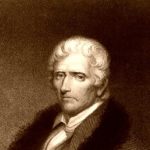
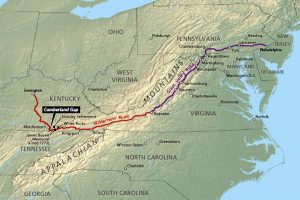 In 1775, Daniel Boone blazed a trail through the Cumberland Gap…a notch in the Appalachian Mountains located near the intersection of Kentucky, Virginia and Tennessee…through the interior of Kentucky and to the Ohio River. That might not seem like such a big deal, but the trail, which became known as the Wilderness Road, would serve as the pathway to the western United States for some 300,000 settlers over the next 35 years. The path that Boone pioneered led to the establishment of the first settlements in Kentucky, including Boonesboro; and to Kentucky’s admission to the Union as the 15th state in 1792. Of course, Daniel Boone wasn’t the first human being to ever use the trail. The earliest origins of the Wilderness Road were the trails, created by the great herds of buffalo that once roamed the region. Then came the Native American tribes such as the Cherokee and Shawnee, who used the trails to make attacks on each other. They called the trail the Athowominee, which means “Path of the Armed Ones” or “The Great Warrior’s Path.” In 1673, a young man named Gabriel Arthur, became the first white settler known to have crossed through the Cumberland Gap using part of what would become the Wilderness Road. Of course, it wasn’t his choice to go. The Shawnee warriors captured Arthur and forced him to go with them, before releasing him later. I’m quite sure he would have gladly forgone the honor of being the first white man on the trail, if it meant that he would not be taken prisoner.
In 1775, Daniel Boone blazed a trail through the Cumberland Gap…a notch in the Appalachian Mountains located near the intersection of Kentucky, Virginia and Tennessee…through the interior of Kentucky and to the Ohio River. That might not seem like such a big deal, but the trail, which became known as the Wilderness Road, would serve as the pathway to the western United States for some 300,000 settlers over the next 35 years. The path that Boone pioneered led to the establishment of the first settlements in Kentucky, including Boonesboro; and to Kentucky’s admission to the Union as the 15th state in 1792. Of course, Daniel Boone wasn’t the first human being to ever use the trail. The earliest origins of the Wilderness Road were the trails, created by the great herds of buffalo that once roamed the region. Then came the Native American tribes such as the Cherokee and Shawnee, who used the trails to make attacks on each other. They called the trail the Athowominee, which means “Path of the Armed Ones” or “The Great Warrior’s Path.” In 1673, a young man named Gabriel Arthur, became the first white settler known to have crossed through the Cumberland Gap using part of what would become the Wilderness Road. Of course, it wasn’t his choice to go. The Shawnee warriors captured Arthur and forced him to go with them, before releasing him later. I’m quite sure he would have gladly forgone the honor of being the first white man on the trail, if it meant that he would not be taken prisoner.
Another expedition, led by Dr Thomas Walker set out in 1750, from Virginia with the aim of exploring lands further west for potential settlement. Discouraged by the rough terrain in southeastern Kentucky, the group turned back, but Walker’s detailed report of the expedition proved to be an invaluable resource for later expeditions, including Boone’s. Having hiked some pretty tough trails, I can say that I can understand the idea of turning back. I’ve never turned back on a trail, but then I’m not camping out on my trails either. Freezing cold in the nights and searing heat in the daytime, could make for a very rough trip.
In 1773, Boone attempted to lead his family and several others to settle in Kentucky, but Cherokee Indians attacked the group, and two of the would-be settlers, including Boone’s son James, were killed. Two years later, a group of wealthy investors headed up by Judge Richard Henderson of North Carolina formed the Transylvania Company, to colonize the rich lands around the Kentucky River and establish Kentucky as the 14th colony. They decided to hire Boone, who’s knowledge of the existing trails was well known, to blaze a new trail through the Cumberland Gap. Henderson decided to approach the Cherokee directly, and in March 1775 his associates negotiated with the Cherokee to purchase the land between the Cumberland and Kentucky rivers, a total of some 20 million acres, for 10,000 pounds of goods.
On March 10, 1775, Boone and around 30 other ax-wielding road cutters, including his brother and son-in-law, set off from the Long Island of Holston River, a sacred Cherokee treaty site located in present day Kingsport, Tennessee. From there they traveled north along a portion of the Great Warrior’s Path, heading through Moccasin Gap in the Clinch Mountains. They Avoided Troublesome Creek, which had plagued previous travelers along the route, and crossed the Clinch River, near what is now Speers Ferry, Virginia. Then they followed Stock Creek, crossed Powell Mountain through Kane’s Gap and headed into the Powell River Valley. About 20 miles from the Cumberland Gap, Boone and his party rested at Martin’s Station, a settlement near what is now Rose Hill, Virginia that had been founded by Joseph Martin in 1769. After a Native American attack, Martin and 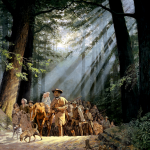
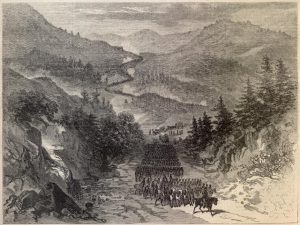 his fellow settlers had abandoned the region, but they had returned in early 1775 to build a more permanent settlement. Just before reaching their intended settlement site on the Kentucky River in late March, Boone’s group was attacked by some of the Shawnee. They had not ceded their right to Kentucky’s land, like the Cherokee. Most of Boone’s men were able to escape, but a few were killed or injured. In April, the group finally arrived on the south side of the Kentucky River, in what is now Madison County, Kentucky.
his fellow settlers had abandoned the region, but they had returned in early 1775 to build a more permanent settlement. Just before reaching their intended settlement site on the Kentucky River in late March, Boone’s group was attacked by some of the Shawnee. They had not ceded their right to Kentucky’s land, like the Cherokee. Most of Boone’s men were able to escape, but a few were killed or injured. In April, the group finally arrived on the south side of the Kentucky River, in what is now Madison County, Kentucky.
 When we think of the Revolutionary war, or any other war, the people we think of are usually generals, presidents, and enemies, but in the case of the Revolutionary War, there is another name that is quite important. Her name was Betsy Ross. She became a patriotic icon in the late 19th century when stories surfaced that she had sewn the first “stars and stripes” US flag in 1776. Some say that story is doubtful, but Ross was known to have sewn flags during the Revolutionary War. Betsy was born Elizabeth Griscom on January 1, 1752, to Rebecca James Griscom and Samuel Griscom, who were both Quakers, living in the bustling colonial city of Philadelphia. As was often the case in those days, families were large, and Elizabeth was the eighth of seventeen children. Elizabeth came from generations of craftsman. Her father was a house carpenter. Elizabeth attended a Quaker school and was then apprenticed to William Webster, who was an upholsterer. In Webster’s workshop she learned to sew mattresses, chair covers and window blinds, but Betsy was a bit of a rebel, it seems. In the summer of 1773, when Betsy was 21 years old, she crossed the river to New Jersey to elope with John Ross, a fellow apprentice of Webster’s and the son of an Episcopal minister. This was a double act of defiance, and she was expelled from the Quaker church. The Rosses started their own upholstery shop, and John joined the militia. He died after barely two years of marriage. Family legend attributed John’s death to a gunpowder explosion, but illness is a more likely cause of death. Whatever the cause, Betsy found herself widowed, and exiled from her family, but Betsy was no quitter.
When we think of the Revolutionary war, or any other war, the people we think of are usually generals, presidents, and enemies, but in the case of the Revolutionary War, there is another name that is quite important. Her name was Betsy Ross. She became a patriotic icon in the late 19th century when stories surfaced that she had sewn the first “stars and stripes” US flag in 1776. Some say that story is doubtful, but Ross was known to have sewn flags during the Revolutionary War. Betsy was born Elizabeth Griscom on January 1, 1752, to Rebecca James Griscom and Samuel Griscom, who were both Quakers, living in the bustling colonial city of Philadelphia. As was often the case in those days, families were large, and Elizabeth was the eighth of seventeen children. Elizabeth came from generations of craftsman. Her father was a house carpenter. Elizabeth attended a Quaker school and was then apprenticed to William Webster, who was an upholsterer. In Webster’s workshop she learned to sew mattresses, chair covers and window blinds, but Betsy was a bit of a rebel, it seems. In the summer of 1773, when Betsy was 21 years old, she crossed the river to New Jersey to elope with John Ross, a fellow apprentice of Webster’s and the son of an Episcopal minister. This was a double act of defiance, and she was expelled from the Quaker church. The Rosses started their own upholstery shop, and John joined the militia. He died after barely two years of marriage. Family legend attributed John’s death to a gunpowder explosion, but illness is a more likely cause of death. Whatever the cause, Betsy found herself widowed, and exiled from her family, but Betsy was no quitter.
In the summer of 1776 or 1777, a widowed Betsy Ross received a visit from General George Washington regarding a design for a flag for the new nation. Washington and the Continental Congress had come up with the basic layout. Betsy allegedly finalized the design, arguing for stars with five points, instead of the six 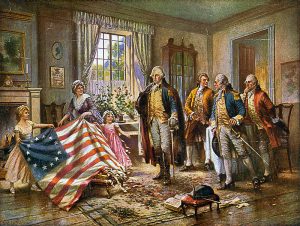 pointed stars that Washington had suggested, mainly because the cloth could be folded and cut out with a single snip. The tale of Washington’s visit to Ross was first made public in 1870, nearly a century later, by Betsy Ross’s grandson. However, the flag’s design was apparently not fixed until later than 1776 or 1777. Charles Wilson Peale’s 1779 painting of George Washington following the 1777 Battle of Princeton features a flag with six-pointed stars.
pointed stars that Washington had suggested, mainly because the cloth could be folded and cut out with a single snip. The tale of Washington’s visit to Ross was first made public in 1870, nearly a century later, by Betsy Ross’s grandson. However, the flag’s design was apparently not fixed until later than 1776 or 1777. Charles Wilson Peale’s 1779 painting of George Washington following the 1777 Battle of Princeton features a flag with six-pointed stars.
As I said, there has been some arguments as to the validity of Betsy Ross’ claim to fame as the flag’s maker, but most have been successfully disproven. Still, the fact that a painting was done with the six pointed stars is something to consider, or at least wonder about, not that I’m disputing her claim to fame. In fact, I have wondered if the painting was done that way, because of General Washington’s plan for the flag. I have also wondered why it was always said that Betsy Ross sewed the flag, because in June of 1777, Betsy remarried, to a man named Joseph Ashburn, who was a sailor. They went on to have two daughters. In 1782 Ashburn was apprehended while working as a privateer in the West Indies and died in a British prison. A year later, Betsy married John Claypoole, a man who had grown up with her in Philadelphia’s Quaker community and had been imprisoned in England with Ashburn. A few months after their wedding, the Treaty of Paris was signed, ending the Revolutionary War. They went on to have five daughters. Over the next decades, Betsy Claypoole and her daughters sewed upholstery and made flags, banners and standards for the new nation. In 1810 she made six 18 by 24 foot garrison flags to be sent to New Orleans. The next year she made 27 flags for the Indian Department. She spent her last decade in retirement, her vision failing. She died in 1836, at age 84.
The records of the US flag’s origins are not complete, in part because at that time Americans were indifferent to 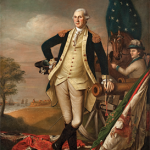 flags as national relics. “The Star-Spangled Banner” was written in 1812, but wasn’t popular until the 1840s. As the 1876 US Centennial approached, enthusiasm for the flag increased. In 1870, that Betsy Claypoole’s grandson William Canby presented the family story to the Historical Society of Pennsylvania. At the time several claims on the first flag were surfacing, ranging from other Philadelphia seamstresses to a New Hampshire quilting bee said to have fashioned the banner out of cut-up gowns. Most such stories were wishful desires to be symbols of female Revolutionary patriotism. To be women materially supporting their fighting men and, maybe to show George Washington a better way to make a star. Nevertheless, none of the stories ever took hold, except the one about Betsy Ross…or Ashburn…or Claypoole.
flags as national relics. “The Star-Spangled Banner” was written in 1812, but wasn’t popular until the 1840s. As the 1876 US Centennial approached, enthusiasm for the flag increased. In 1870, that Betsy Claypoole’s grandson William Canby presented the family story to the Historical Society of Pennsylvania. At the time several claims on the first flag were surfacing, ranging from other Philadelphia seamstresses to a New Hampshire quilting bee said to have fashioned the banner out of cut-up gowns. Most such stories were wishful desires to be symbols of female Revolutionary patriotism. To be women materially supporting their fighting men and, maybe to show George Washington a better way to make a star. Nevertheless, none of the stories ever took hold, except the one about Betsy Ross…or Ashburn…or Claypoole.
 When we think of Nazi Germany, Hitler always comes to mind. We all know that he was an insane, murderous dictator, and that the people of Germany were afraid to stand up to him and his army. We know that he hated the Jewish people, even though he was part Jewish, and that later he also hated the gypsies. His hatred grew so strong that he enslaved and killed many thousands of these people, for no crime other than that they were Jewish or gypsies. During the years of Hitler’s reign, there were those who followed him because they agreed with him, those who just weren’t sure what they believed, and those who disagreed, but dared not oppose him. Children were often taken from their families and raised to be good Nazis. I’m sure this added to the number of people who agreed with Hitler, because it is a well know fact that children learn what they live.
When we think of Nazi Germany, Hitler always comes to mind. We all know that he was an insane, murderous dictator, and that the people of Germany were afraid to stand up to him and his army. We know that he hated the Jewish people, even though he was part Jewish, and that later he also hated the gypsies. His hatred grew so strong that he enslaved and killed many thousands of these people, for no crime other than that they were Jewish or gypsies. During the years of Hitler’s reign, there were those who followed him because they agreed with him, those who just weren’t sure what they believed, and those who disagreed, but dared not oppose him. Children were often taken from their families and raised to be good Nazis. I’m sure this added to the number of people who agreed with Hitler, because it is a well know fact that children learn what they live.
Nevertheless, while many people think that all the German people agreed with Hitler’s ways, but in reality, that was not the case. As World War II started to turn against the Germans, and Hitler’s atrocities grew, growing numbers of Germans, both military and civilian…began conspiring to assassinate their leader. It was assumed that the masses were unlikely to turn on the man in whose hands they had placed their lives and future. That said, they knew that it was up to men close to Hitler…German officers, to remove him. Leadership of the plot fell to Claus von Stauffenberg, newly promoted to colonel and chief of staff to the commander of the army reserve. His position gave him access to Hitler’s headquarters at Berchtesgaden and Rustenburg.
Stauffenberg had served in the German army since 1926. He was a staff officer in the campaign against the Soviet Union. He became disgusted at his fellow countrymen’s vicious treatment of Jews and Soviet prisoners. He requested to be transferred to North Africa, where he lost his left eye, right hand, and two fingers of his left hand. After recovering from his injuries, Stauffenberg became determined to see Hitler removed from power by 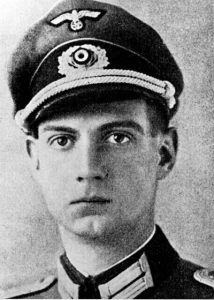 any means necessary. He traveled to Berchtesgaden on July 3 and met with a fellow army officer, Major General Helmuth Stieff, who gave him a bomb with a silent fuse that was small enough to be hidden in a briefcase. On July 11, 1944, Stauffenberg was summoned to Berchtesgaden to report to Hitler on the current military situation. He planned to use the bomb on July 15, but at the last minute, Hitler was called away to his headquarters at Rustenburg, in East Prussia. Stauffenberg was asked to follow him there. On July 16, a meeting took place between Stauffenberg and Colonel Caesar von Hofacker, who was another conspirator, in the Berlin suburb of Wannsee. Hofacker informed Stauffenberg that German defenses had collapsed at Normandy, and the tide had turned against them in the West. The assassination attempt was postponed until July 20, at Rustenburg. In the end, it wasn’t an assassin’s bomb that ended Hitler’s reign, but rather his own hands. Nevertheless, it wasn’t because the German people wanted him to continue to be their leader, because they definitely did not.
any means necessary. He traveled to Berchtesgaden on July 3 and met with a fellow army officer, Major General Helmuth Stieff, who gave him a bomb with a silent fuse that was small enough to be hidden in a briefcase. On July 11, 1944, Stauffenberg was summoned to Berchtesgaden to report to Hitler on the current military situation. He planned to use the bomb on July 15, but at the last minute, Hitler was called away to his headquarters at Rustenburg, in East Prussia. Stauffenberg was asked to follow him there. On July 16, a meeting took place between Stauffenberg and Colonel Caesar von Hofacker, who was another conspirator, in the Berlin suburb of Wannsee. Hofacker informed Stauffenberg that German defenses had collapsed at Normandy, and the tide had turned against them in the West. The assassination attempt was postponed until July 20, at Rustenburg. In the end, it wasn’t an assassin’s bomb that ended Hitler’s reign, but rather his own hands. Nevertheless, it wasn’t because the German people wanted him to continue to be their leader, because they definitely did not.
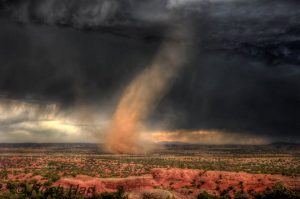 Weather has always been a subject of interest to people, even if we still don’t completely have a full grasp of it, not even after all these years and all our technology. The main difference I see now is that we hear about weather all the time. It’s on television, the radio, and even our phones. There are warnings for everything…thunder storms, tornadoes, snow storms, flash floods, and hurricanes. Nevertheless, all the meteorologists can truly do is predict a weather event. It may or may not materialize.
Weather has always been a subject of interest to people, even if we still don’t completely have a full grasp of it, not even after all these years and all our technology. The main difference I see now is that we hear about weather all the time. It’s on television, the radio, and even our phones. There are warnings for everything…thunder storms, tornadoes, snow storms, flash floods, and hurricanes. Nevertheless, all the meteorologists can truly do is predict a weather event. It may or may not materialize.
Now, flash back to, oh say 1680 or even to 1521. Other than looking at the sky, how did the people predict the weather? Yes the sky can be a great predictor of coming storms, but unless you knew something about weather  patterns, you would be unlikely to have any idea that something like a tornado, flood, or hurricane were coming. Especially in 1680 or 1521. Those dates are rather important in the world of weather. In August of 1521, a meteorological phenomenon occurred in the Basin of Mexico. There were no cameras back them, no cell phones or computers to record the event. The only known description appears in Book XII of the Florentine Codex, which is an account of the Spanish conquest of Mexico written in Nahuatl in the mid-sixteenth century. The account states that just before the fall of Mexico-Tenochtitlan a heavy storm which included a whirlwind struck the basin. The whirlwind hovered for a while above Tlatelolco, Tenochtitlan’s twin city. Then it moved to the lake where it disappeared.
patterns, you would be unlikely to have any idea that something like a tornado, flood, or hurricane were coming. Especially in 1680 or 1521. Those dates are rather important in the world of weather. In August of 1521, a meteorological phenomenon occurred in the Basin of Mexico. There were no cameras back them, no cell phones or computers to record the event. The only known description appears in Book XII of the Florentine Codex, which is an account of the Spanish conquest of Mexico written in Nahuatl in the mid-sixteenth century. The account states that just before the fall of Mexico-Tenochtitlan a heavy storm which included a whirlwind struck the basin. The whirlwind hovered for a while above Tlatelolco, Tenochtitlan’s twin city. Then it moved to the lake where it disappeared.
When the experts of today look at the account of the phenomenon in the context of the Nahua culture, and  comparing it with European descriptions of tornados and waterspouts, they can determine that the phenomenon was indeed a tornado. Their conclusion is further supported by eighteenth and nineteenth century pictorial and written evidence showing that tornadoes do occur in the territory now occupied by Mexico City. Since the tornado of Tlatelolco predates the Cambridge, Massachusetts, tornado of July 8, 1680, which had been thought to be the first recorded tornado in the Americas, the Tlatelolco tornado actually represents the earliest documented tornado in the Americas. Either way, since people didn’t really have much information to go on back then, I’m sure they first said some version of “What is that?!!?” At least, I know I would have.
comparing it with European descriptions of tornados and waterspouts, they can determine that the phenomenon was indeed a tornado. Their conclusion is further supported by eighteenth and nineteenth century pictorial and written evidence showing that tornadoes do occur in the territory now occupied by Mexico City. Since the tornado of Tlatelolco predates the Cambridge, Massachusetts, tornado of July 8, 1680, which had been thought to be the first recorded tornado in the Americas, the Tlatelolco tornado actually represents the earliest documented tornado in the Americas. Either way, since people didn’t really have much information to go on back then, I’m sure they first said some version of “What is that?!!?” At least, I know I would have.

